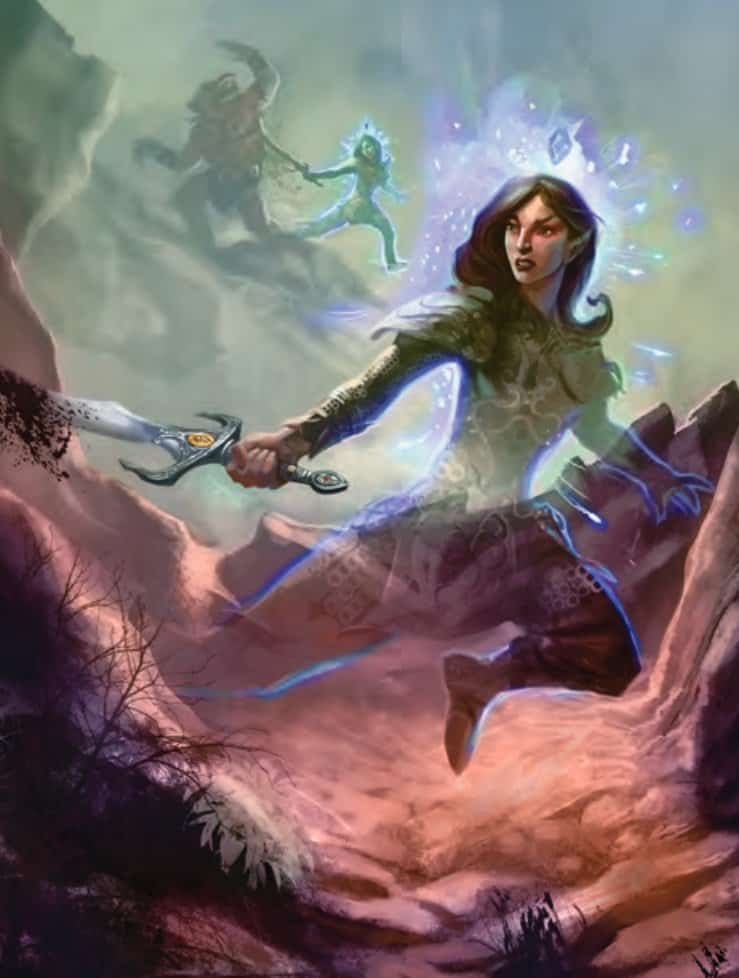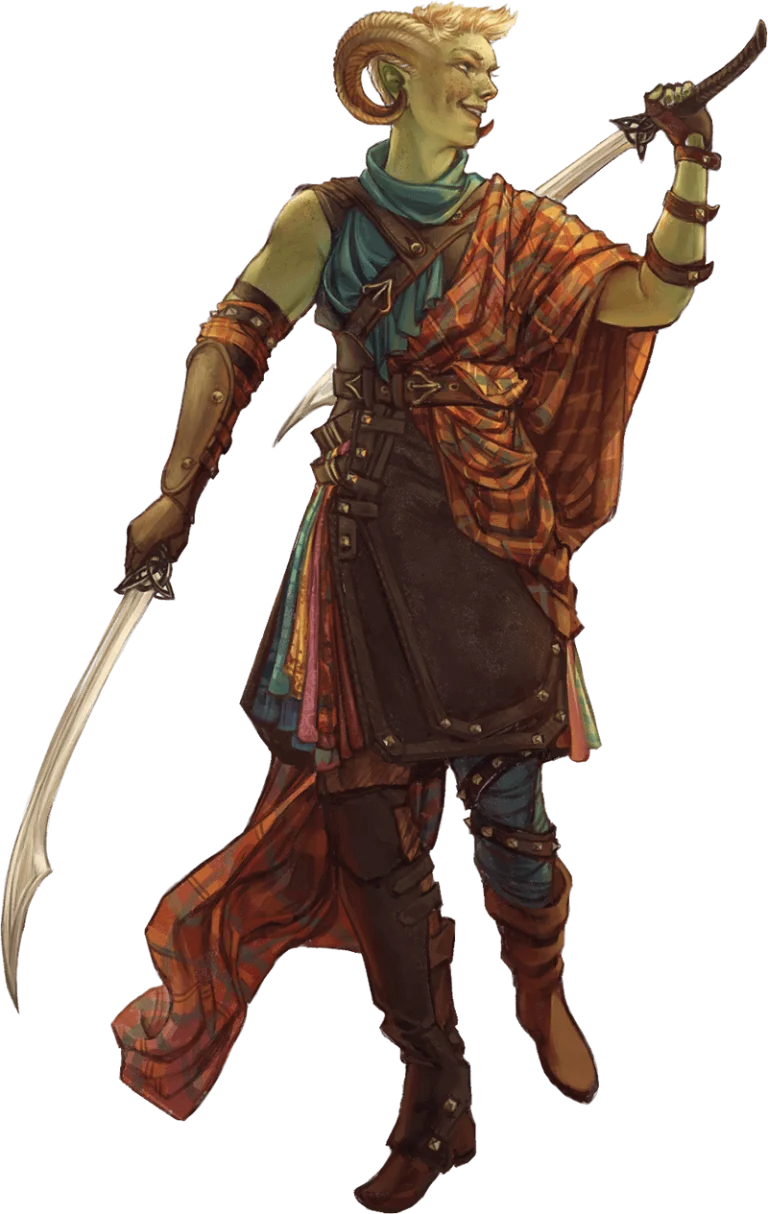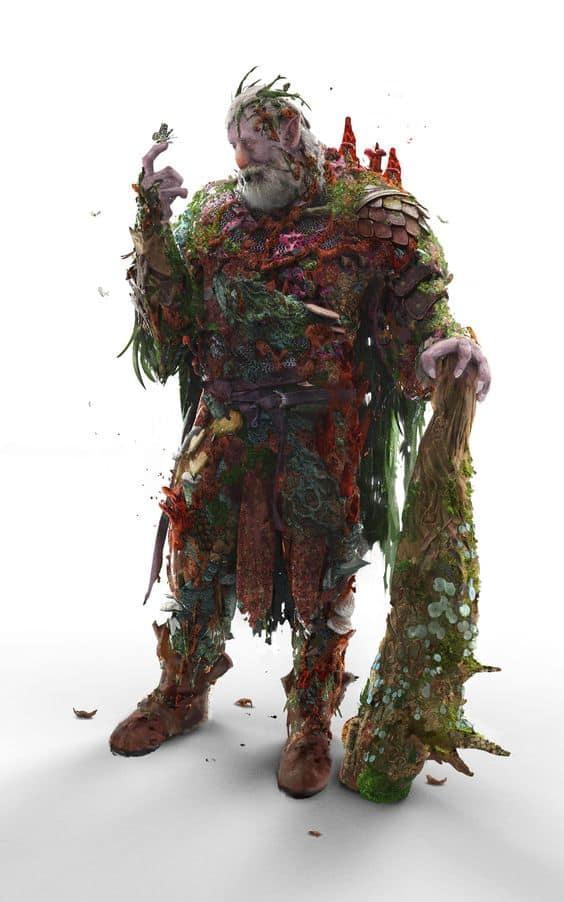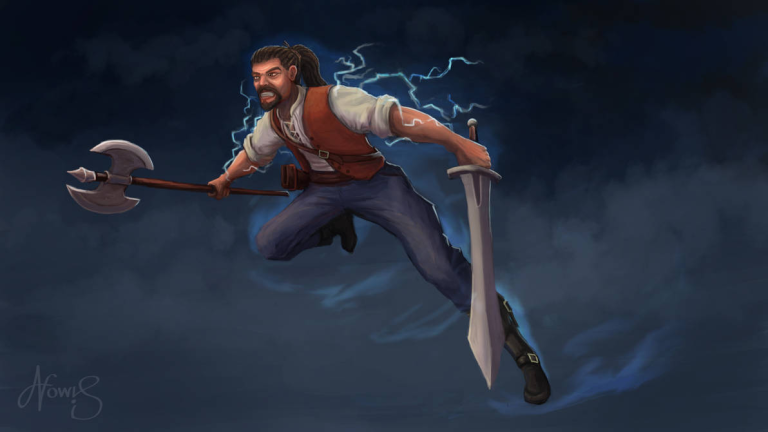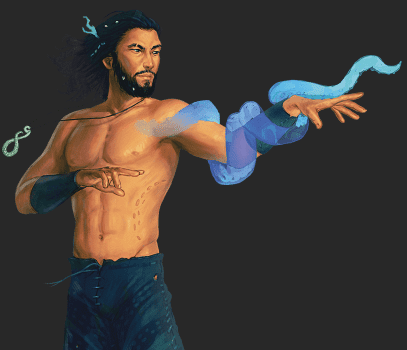D&D 5e: Scout Rogue Guide
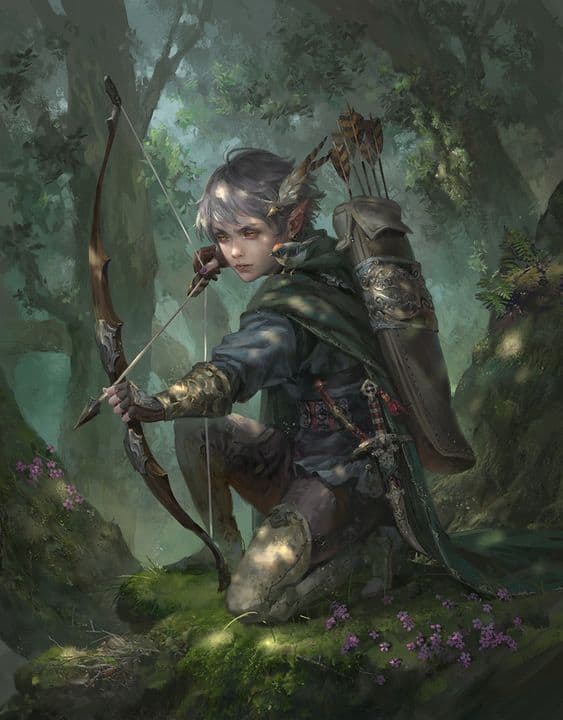
D&D 5e: Scout Rogue Guide
Role in the Party
Many Rogues are happiest surrounded by brick walls and bustling crowds that they can vanish into after delivering a hidden blade. But possibly the most terrifying Rogues are those who can appear from the undergrowth like a bestial predator, eviscerate their target, then melt into the greenery with barely a whisper. The Scout.
As capable in cities as they are flitting through treetops or hunting in the desert, the Scout is a peerless party guide and a vicious combatant. But time outdoors hasn’t dulled any of the standard Rogue skills either, and many Scouts are just as capable of making deals and cracking safes as any of their equals.
This guide breaks down the Scout subclass, possible build paths, skill choices, feats, and more you need to know.
Epic
Good
Meh
Bad
The Scout Rogue subclass is found in Xanathar’s Guide to Everything. Click here to pick up your own copy of Xanathar’s Guide to Everything!
Scout Features
Skirmisher: From level 3, if an enemy ends its turn within 5ft of the Scout, it can spend its reaction to move up to half its speed.
At first glance, this ability seems incredible. Move away from enemies when they get close to you, right?
Wrong. Reading a little deeper into the ability reveals that the timing is just a little bit off. The reaction can only be taken when the enemy ends their turn within 5ft. That means that the enemy gets to attack, cast spells, or do whatever it wants to the Scout before they get to move away.
This is a reaction Disengage that can be used instead of Cunning Action, with some free movement thrown in as a benefit. The ability can get melee fighters where they want to be and archers out of combat so they don’t have Disadvantage. But compared to some archetypes’ level 3 abilities, it’s slightly disappointing.
Survivalist: Also at level 3, the Scout gains proficiency in both the Nature and Survival skills. They also double their proficiency bonus when taking checks in the skills.
Two free skills, with free Expertise in both of them, are fantastic additions to the Scout’s out-of-combat utility and turn the character into possibly the best skill character in the entire game at this level. It also means the Scout is better equipped in the outdoors than both Rangers and Druids, which is a pretty funny thing to think about.
Superior Mobility: Available from level 9, this is a plain and simple 10ft increase to the Scout’s movement speed. It also applies to Swim and Flight speeds, if the Scout has those.
Simple, effective, always useful, but slightly boring.
Ambush Master: From level 13, the Scout’s honed reactions give them a permanent Advantage on Initiative rolls.
On top of this, the first target the Scout hits in the first round of combat is marked by the class, granting Advantage to any further attacks the Scout makes, as well as any attacks made against the target (for example, by all the other party members) until the start of the Scout’s next turn.
Sudden Strike: From level 17, the Scout is skilled enough to split its focus and sneak attack more often.
Whenever the Scout takes the Attack action, it can make another attack as a bonus action. This sounds like pseudo two-weapon fighting, but it’s significantly better, as it works with all fighting styles, including single weapon dueling, and ranged weapons.
Better still, if this bonus attack is made against a different target than the first, it also benefits from the Rogue’s sneak attack feature, which at this level is a casual 9d6 damage, plus weapon dice.
That’s an obscene amount of dice to gain out of nowhere, and a ridiculous spike to the Scout’s damage. This ability is also one of the few ways to consistently get a bonus action attack every single turn when using ranged weapons, in the entire game.
The single downside with Sudden Strike is that it takes until level 17 to access it. That’s late enough that a lot of characters are never going to see it, which is a big shame, as this is powerful enough to be character-defining, and it would have been so much more fun to get it at a level that’s usable in much more content.
Strengths
Strangely, a Rogue subclass is a better Ranger than the Ranger ever could be, but there you go. Four skills with Expertise at level 3, with a minimum of 8 proficiencies, means that this subclass is literally proficient in almost half of the skills in the entire game. Two of the Expertise options are locked into the skills the class gives, which means that with a Scout in the party, it’s going to be almost impossible to get lost or struggle to find food.
The Scout is also as mobile as its name would suggest. Flat increases in movement speed and a reactionary move that can be taken when enemies get too close can turn the Scout into one of the fastest classes in the game, able to move up to 3.5 times its speed in one round, with multiple options for ducking away from danger.
At later levels, as combat abilities start to kick in, suddenly the Scout is also one of the most terrifying Rogue archetypes in all of 5e. Bonuses to going first, Advantage on attacks for the entire party just for hitting an enemy, and the potential to deal sneak attack twice every single turn, an ability that’s shared by no other subclass. (The closest thing to it is only a 50% sneak attack buff, and that’s on limited uses.)
The abilities on offer tend to push the Scout towards being an archer, but it’s just as happy as a melee fighter, darting in to cut enemies down before retreating to cover. The class is also a great basis for multiclassing, offering a wide suite of skills and powers that are as happy working as a dip as it is a full class.
Weaknesses
One of the biggest problems with the Scout subclass of the Rogue is that most of its powerful, interesting abilities come at later levels. Ambush Master and Sudden Strike are both incredibly effective, increasing the damage the class and its party member allies deal by a significant margin.
But the absolute minimum level the character has to be to gain this power? Level 13.
Before level 13, the Scout is, honestly, kind of dull. With proper positioning and a well-oiled party protecting them, a Scout that’s using ranged weapons to stay out of combat and deliver their damage might never actually use their in-combat subclass abilities. That’s a major disappointment, especially when you weigh the class directly against its peers.
The Scout also has the usual Roguish weaknesses. Light armor and a d8 hit die make it very squishy for the enemies that get to grips with it. No magical prowess at all. And really only one option in combat. Sneak attack for a ton of damage. Once the Scout’s build comes online, it’s probably going to be doing the same thing every turn. That’s an fine playstyle, but it can get a little bit dull for some players.
Best Race Options
Eladrin: All of the Elf goodies, including Perception proficiency, some weapon skills, Darkvision, and the weird Elven sleep thing. The Eladrin brings a bonus action teleport into the mix, which can be used once per short rest and comes with a handy rider. Winter is best. Potentially Frightening an enemy you’ve just teleported away from is like the Scout’s level 3 ability. Except better.
Owlin: It’s much easier to act as a scout when you can fly. The flight of the Owlin is permanent and only affected by medium and heavy armor, which the Scout isn’t wearing anyway. Darkvision and Stealth proficiency are more things the character probably wants. If your GM allows flying races, take this.
Halfling: Everything the Halfling does is useful for a Scout. The small size barely affects Rogue weapon choices, and the speed penalty is offset by subclass abilities.
Instead, you gain Advantage against fear effects, and rerolls on all 1s, which is handy when you’re only making one attack a turn, plus the subrace bonus. Lightfoot can hide behind allies, Lotusden gets Druidic spells, Ghostwise can telepathically talk to their party. But all are good.
Choosing the Right Skills
The Scout is probably in the top 3 classes for skill usage in the entire game. The combination of bonus skills provided by the subclass and another two instances of low-level Expertise means that the Scout can probably out-skill almost anyone.
The subclass already provides two important skills, Nature and Survival, plus automatic Expertise in both, all but guaranteeing that the character is at home in forests and out on the plains.
With the six skill slots provided by class and background, Perception and Stealth are almost auto takes, and the Rogue might even consider spending an Expertise or two here.
Social skills are also excellent options, especially if the Scout is taking the role of party face. Persuasion is the most useful skill and again, might warrant Expertise. This is closely followed by Deception. Avoid Intimidation unless you have a specific plan in mind.
More knowledge skills are also generally good to have, especially ones that make sense for your campaign, or that the party isn’t covering. That’s good advice for the Scout in general. If possible, when choosing skills, see what your party can’t do, then fill that gap. After all, if anyone has the skill slots for it, it’s you.
Fitting Feats
Sharpshooter: If the build is using ranged weapons, it needs Sharpshooter. Increasing the effective range that sneak attacks can be delivered and ignoring cover are major benefits that are hard to find in other places.
And so is the flat +10 damage. That’s roughly equivalent to the average damage on 3d6. And who would say no to 3 more sneak attack dice?
Alert: The Scout already gains Advantage on Initiative checks from its subclass. A +5 bonus to that check can almost guarantee the Scout is going first.
Immunity to surprise and help fighting creatures the character can’t see is also useful, as well as feeling very Scouty.
Fighting Initiate: Choose a fighting style. Standouts are Archery, because a flat +2 to hit is a 10% increase in attack effectiveness, Dueling for bonus melee damage every single turn, and Blind Fighting for utility against invisible enemies.
Optimal Backgrounds
Charlatan: Two solid thief skills and two Roguish toolkits give the Scout the tools it needs to operate in urban environments as well as the wilderness.
Courtier: Excellent social skills and a pair of languages is the perfect package for a face.
Folk Hero: A reason to roam, two nice skills, a choice of a toolkit, and the ability to drive land vehicles are everything a traveling Rogue could look for.
Multiclassing Options
College of Eloquence Bard: Did you want Expertise in six different skills? How about a minimum floor on Charisma based social skills? Do you want to make enemies fail saves against your party’s best abilities just by shouting insults at them? Of course. That sounds fantastic.
Losing 2d6 sneak attack dice is rough, but gaining massive out-of-combat utility, as well as Bardic spellcasting, are more than worth that drop, especially if your party is already fine with dealing damage and needs someone to cover the rest of the adventuring day.
Hexblade Warlock: One level of Hexblade is an incredible dip for almost any class, and makes absolute sense for the Scout. One level is enough to allow the use of CHA for attack and damage rolls on melee weapons, plus gaining proficiency in heavier armor, shields, and offensive spells (Hex) and defensive spells (like, uh, Shield) plus the best offensive cantrip in the game.
Two levels unlock invocations. Three levels and you can grab a Pact Boon, which could potentially give the character a summonable magical bow, if that’s the combat style. Alternatively, ritual casting or the single best familiar in the game is lovely buffs. The build could potentially fit five levels for Extra Attack, or even more if you’d prefer to focus on magic rather than skill.
Hunter Ranger: Donning medium armor and a shield can bump up your AC, but we want the Giant Killer ability lets the character attack a Large or larger enemy that just attacked them with its counterattack (which, importantly, triggers another burst of full sneak attack damage.) If possible, take the Sentinel feat to allow a reaction attack if the enemy decides to attack your ally instead.
Ranger abilities, including spellcasting and bonuses in the wilderness, are also right on theme for the Scout class, and slot cleanly into most builds.
Would I recommend playing a Scout Rogue?
It’s surprisingly hard to recommend the Scout Rogue over other subclass options, at least at low to mid levels. The abilities it offers are simply not that useful a lot of the time.
For example, the Skirmisher ability would be amazing in a class that didn’t already have Cunning Action. As it is, shifting Disengage from a bonus action to a reaction with a couple of squares of movement tacked on just feels faintly disappointing.
The other things the class offers before level 13, skills and movement, are both effective for what they do, but just aren’t that interesting. The class does come into its own at higher levels, with both of its late game abilities offering massive boosts in power that easily rival or beat other Roguish equivalents, and feel fantastic to use.
But getting there might be a slog. The question to ask yourself is this; If your campaign isn’t starting in the double digit levels, are you happy for the lower levels of the character to essentially be ‘basic Rogue kit plus a couple of skills?’
If so, play Scout. If not, it might be worth looking elsewhere.



